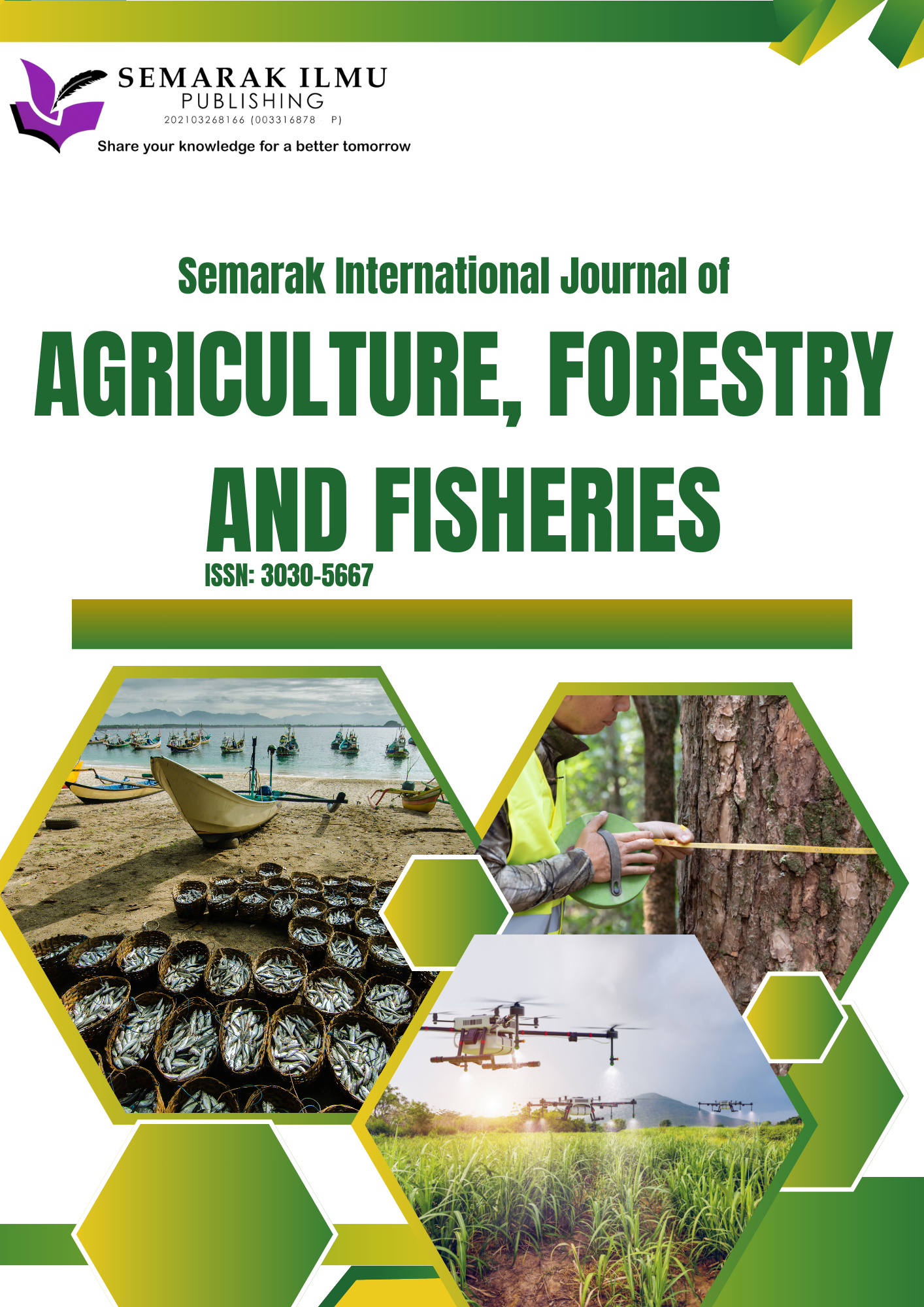Effect of Terminalia Catappa Linn. Leaves Extract on Water Quality, Survival and Blood Profile of Betta sp.
DOI:
https://doi.org/10.37934/sijaff.1.1.4352Keywords:
Three-month olds Betta splendens, specific growth rate, absolute growth rate, red blood cell contentAbstract
Betta sp., also known as Siamese fighting fish, is renowned in the ornamental fish trade for its captivating colours and unique shapes, particularly among male specimens. Despite extensive research, challenges persist in meeting market demand for this species due to high mortality rates during production. Therefore, this study focused on determining the water quality properties (pH, dissolved oxygen, temperature), survival rates and blood profile of the Betta sp. by applying different concentrations of Terminalia catappa leaves (TCL) extracts: 0 (Control treatment), 480 (Treatment 1), 960 (Treatment 2), 1440 (Treatment 3) and 1920 (Treatment 4) ppm on three months old Betta splendens for 30 days. The experiment employed a completely randomized design (CRD) with three replications for each treatment. Results indicated that temperature and dissolved oxygen remained unaffected by varying concentrations of TCL, while pH exhibited a significant decrease with increasing concentration, ranging from 7.07 to 5.88. Notably, treatment 2 (pH 6.73) demonstrated a significant improvement in survival rate, achieving 100 % survival compared to the control (pH 7.07) with 46.67 % survival. Moreover, treatment 2 exhibited a significantly higher specific growth rate (0.85 % per day) compared to the control (0.04 % per day). Red blood cell (RBC) content also exhibited significant differences, with the highest RBC content (1.269 x 10^6 µL) observed at the highest TCL concentration (treatment 4, 1920 ppm). Therefore, the study concludes that the most optimal concentration of TCL, as determined from the research, was 960 ppm with a pH of 6.73. This concentration yielded the highest survival rate and growth performance for 3-month-old Betta splendens.









